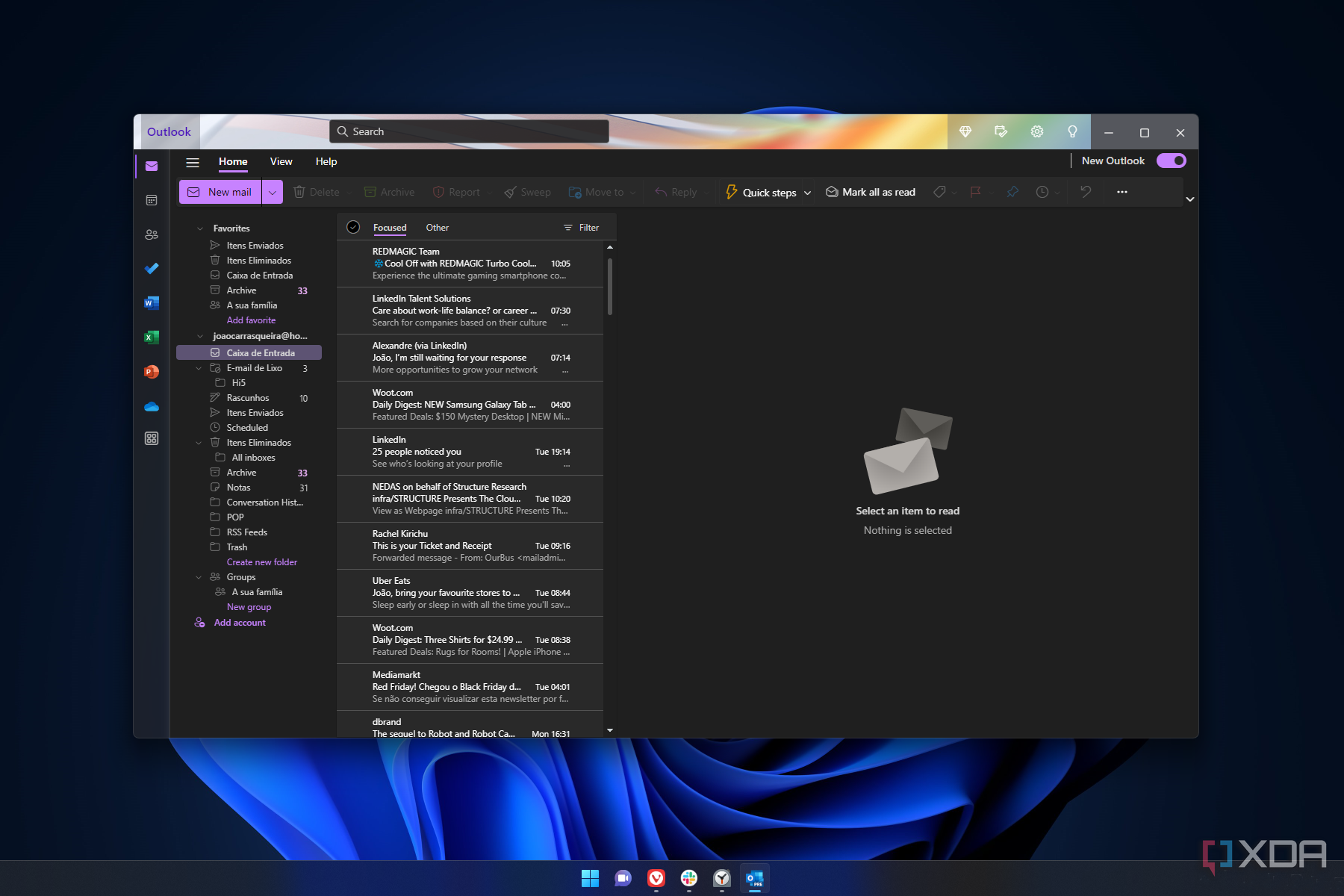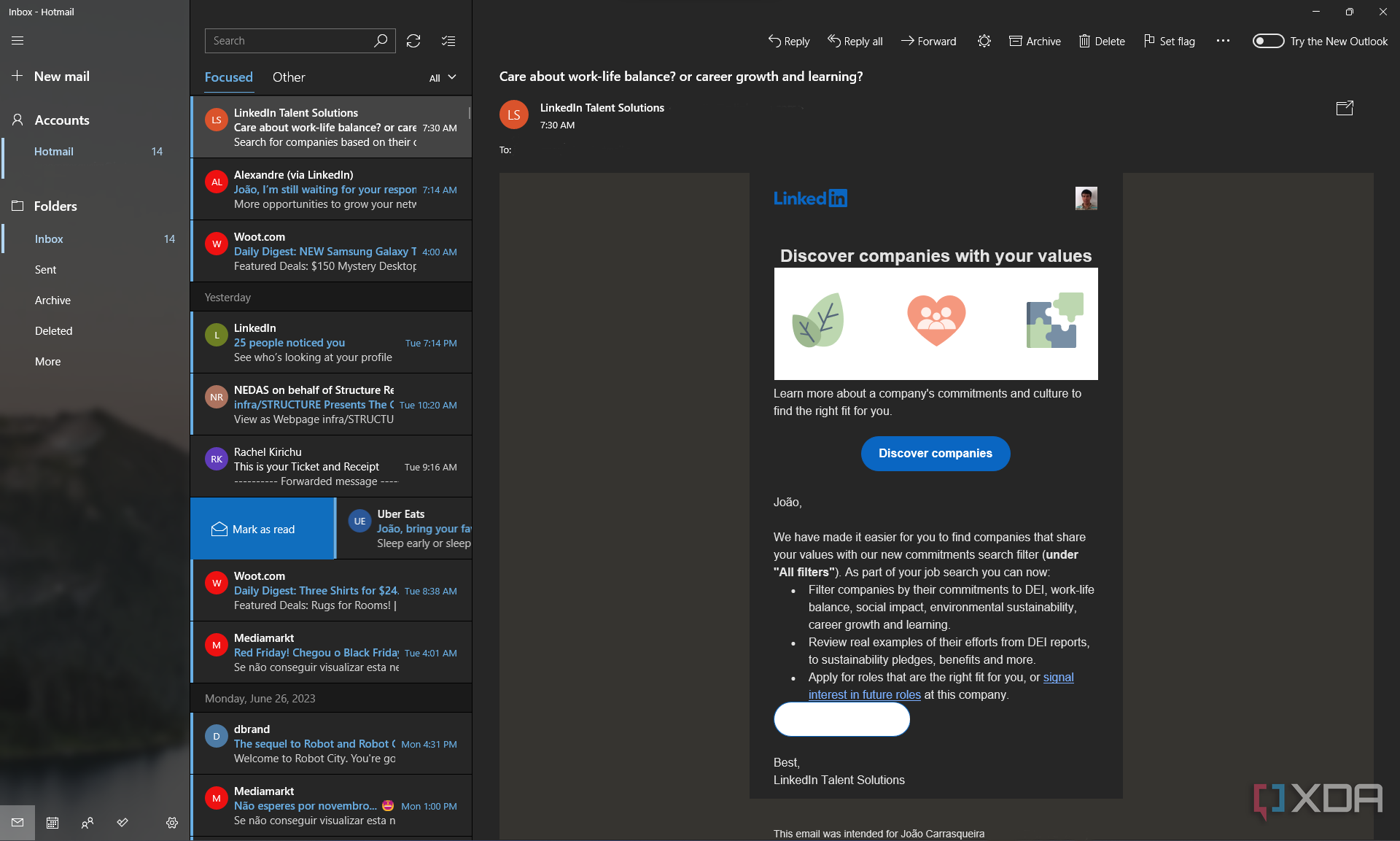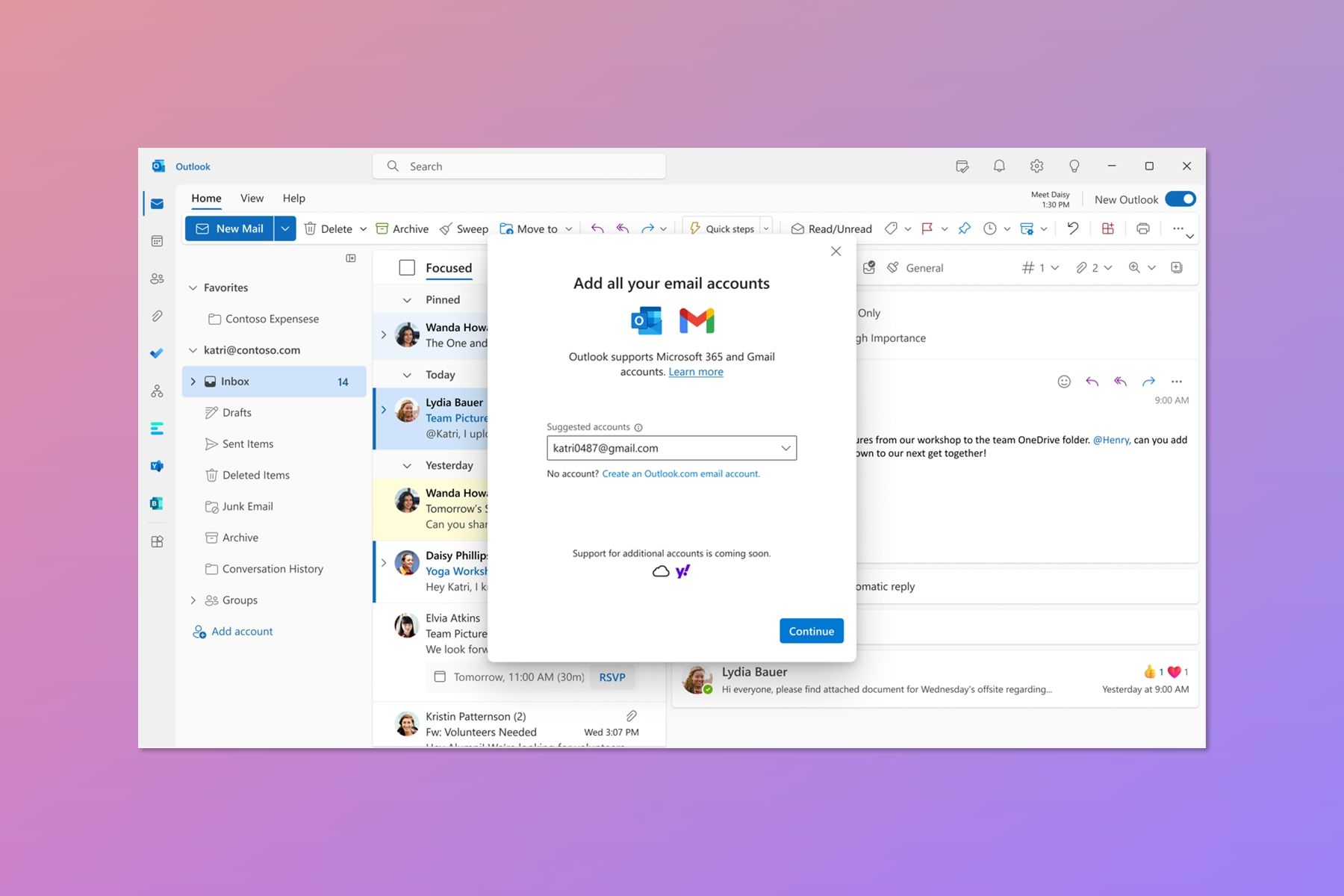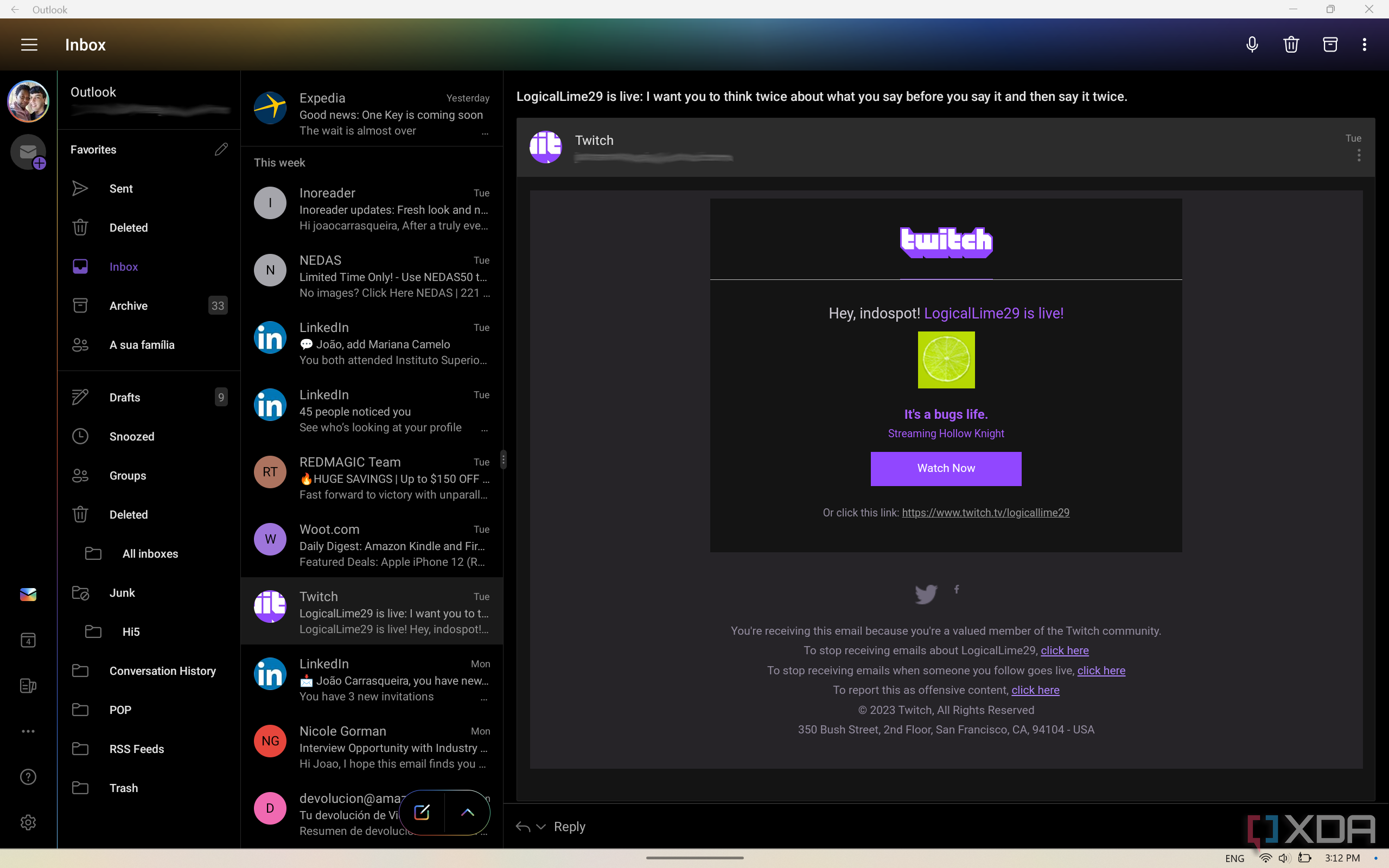For the past few years, we've been hearing about a unified Outlook client for Windows desktops, and we finally started seeing it last year, when it entered preview for Microsoft 365 Insiders (formerly Office Insiders). Microsoft plans to replace both the full-fledged Outlook app and the built-in Mail app in Windows 11 with a web-based alternative, which the company has been taking its time to build up. While that may seem like a good thing, I believe that this update, based on the previews we've gotten to try, will just make Windows 11 worse for touchscreens — an area where Microsoft already struggles somewhat.
Touch support is what makes the Mail app useful
It may seem silly, but touchscreen usage is the primary reason I use the Mail app on Windows 11, and on Windows 10 before that. It's not a fantastic app otherwise. I don't actually trust it to send emails reliably, so I only really use it to clear my inbox across different email accounts. To that extent, replacing it with a web-based app that's bound to get more support is a good thing; I might actually use it to send emails.
But for clearing my inbox, touch support is a godsend. I get a lot of junk emails or messages I don't actively need to read, so a lot of the time, I just want to mark emails as read or delete them. The current Mail app makes this very easy thanks to swipe gestures. I love convertibles and 2-in-1 laptops, and using a touchscreen is genuinely more convenient for a lot of things. Using swipe gestures has always been one of them. I can assign left or right swipes to different actions (usually to mark as read and delete), and swipe away to my heart's content on the inbox. It's intuitive and, dare I say it, kind of fun.
The changes Microsoft is making are just going to make the built-in Mail stand out even less and leave you with almost no reason to use it.
The Outlook web app that's been in testing for over a year at this point lacks touchscreen capabilities. To mark items as read, I'm forced to use the mouse or keyboard. Most devices I use do have a mouse and keyboard, so it works, but it's not the best for every scenario. In fact, I've gotten in the habit of setting up Vivaldi Mail on most laptops I review to do exactly that. The changes Microsoft is making are just going to make the built-in Mail stand out even less and leave you with almost no reason to use it.
There's time to make improvements, but will we see them?
The latest reports indicate that Microsoft is planning to replace the Mail app in Windows 11 with the web-based Outlook app in 2024, which is kind of bizarre. It's a web app based on a platform that's been available for years, and the public preview started over a year ago, with initial reports appearing a year earlier. You'd think it would be available relatively quickly, but Microsoft is taking its sweet time.
A 2024 timeframe gives Microsoft plenty of time to make improvements to the web app. Touch gestures are likely not easy to implement in a web app, but there are examples of such features on other websites. Twitter notably has a pull-to-refresh feature on the mobile website, which is nice. It might be possible for Microsoft to add touch gestures to the Outlook web app, but I have a feeling that won't happen.
In fact, Microsoft has been slow at nailing down the basics of an email app. After a year in public preview, it still only supports Outlook and Gmail accounts, but no other IMAP or POP3 email servers. This is something almost every email app (including the existing Mail app on Windows 11) has supported for years. It's hard to imagine Microsoft will spend more time on extra niceties like touch gestures anytime soon.
Android apps to the rescue
Thankfully, Microsoft has provided an alternative solution that's both better for touch and likely more reliable than the current Mail app: Outlook for Android. Windows 11 can run Android apps, and Outlook is actually one of the best examples of one. The Android version of the app is actually compiled for the x86 architecture (in addition to Arm), meaning it performs pretty well on PCs with Intel or AMD-based processors, and it's stable, too. It's actually one of the best Android apps for Windows, in my opinion.
The cool thing about the Android app is that it also supports the same touch gestures that the Mail app has, so if you enjoy swiping away at your messages as I do, it's a great solution. Because of the way Android apps run on Windows, you can actually "swipe" by clicking and dragging your mouse, so you can always try to go that route if you think that's an effective way to do things. The Android app is also just prettier than the current Mail app, and it's more actively supported. Everything works a bit better overall, so I'd recommend trying it out. It's not perfect, though, because running the Windows Subsystem for Android requires significant system resources, and it can have a noticeable impact on performance, especially if you want these apps running in the background so you get email notifications. Still, if you have a modern laptop, it shouldn't be a huge problem.
Native apps would be better
At the end of the day, though, I believe a native app built for Windows would be better, but only if Microsoft had taken the time to properly support it. As much hate as the Windows 11 Mail app gets, I do enjoy using it. It's a decently attractive app, and as far as receiving emails goes, it's generally very reliable. I've had some issues with sending emails, but that's something that could be fixed.
The problem is Microsoft would rather move everything to the web than properly support its native apps. While the Mail app looked fine, it definitely doesn't align with Windows 11 design principles, and it still looks like it's made for Windows 10. Not to mention the reliability issues I just talked about.
Microsoft would rather move everything to the web than properly support its native apps.
Microsoft has been on this path of building a lot of its apps and products based on the web, and I get it. Web-based content works anywhere, and you can easily update it for all users with far less work. It's efficient. But the best apps on Android or iOS aren't generally web-based. The companies behind these operating systems certainly aren't making their flagship apps into web apps, even if they support them on the platform. Web apps don't make for an appealing platform.
With the right kind of support, the existing Mail app could've been great. The web app may be functional, but it certainly won't wow anyone, and it will likely be missing out on features that would be easier to implement with a native app, like touch gestures. I wish Microsoft would change its course here, but that's not likely to happen.




